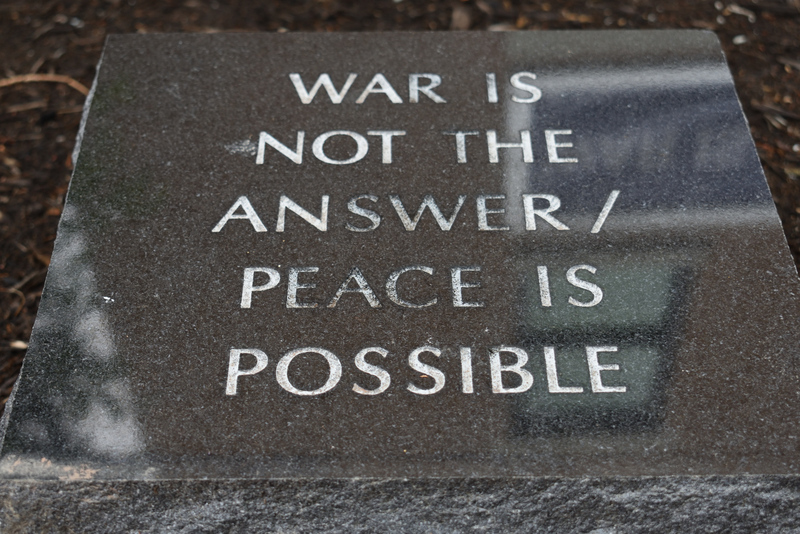That is the title of an article by Robin Wright, New Yorker, May 13, 2019. “Today, the question in Washington—and surely in Tehran—is whether Donald Trump will drag the United States into an armed conflict with Iran.“
I wrote about this on May 8, “Stop the March to War”. This article in the New Yorker provides more examples of the history of the U.S. beginning wars based on highly questionable justifications.
The United States has a long history of provoking, instigating, or launching wars based on dubious, flimsy, or manufactured threats. In 1986, the Reagan Administration plotted to use U.S. military maneuvers off Libya’s coast to provoke Muammar Qaddafi into a showdown. The planning for Operation Prairie Fire, which deployed three aircraft carriers and thirty other warships, was months in the making. Before the Navy’s arrival, U.S. warplanes conducted missions skirting Libyan shore and air defenses—“poking them in the ribs” to “keep them on edge,” a U.S. military source told the Los Angeles Times that year. One official involved in the mission explained, “It was provocation, if you want to use that word. While everything we did was perfectly legitimate, we were not going to pass up the opportunity to strike.”
Is Trump Yet Another U.S. President Provoking a War? Robin Wright, New Yorker, May 13, 2019
Qaddafi took the bait. Libya fired at least six surface-to-air missiles at U.S. planes. Citing the “aggressive and unlawful nature of Colonel Qaddafi’s regime,” the U.S. responded by opening fire at a Libyan patrol boat. “The ship is dead in the water, burning, and appears to be sinking. There are no official survivors,” the White House reported. In the course of two days, the U.S. destroyed two more naval vessels and a missile site in Sirte, Qaddafi’s home town. It also put Libya on general notice. “We now consider all approaching Libyan forces to have hostile intent,” the White House said.
The most egregious case was the U.S. invasion of Iraq, in 2003, which was based on bad intelligence that Baghdad had active weapons-of-mass-destruction programs. The repercussions are still playing out sixteen years (and more than four thousand American deaths) later. The beginning of the Vietnam War was authorized by two now disputed incidents involving U.S. warships in the Gulf of Tonkin. In response, Congress authorized President Johnson, in 1964, to “take all necessary measures to repel any armed attack against the forces of the United States and to prevent further aggression.” The war dragged on for a decade, claiming the lives of fifty-seven thousand Americans and as many as a million Vietnamese fighters and civilians.
It is clear the Republican administration has been creating the conditions to declare a war with Iran. There is no reasonable explanation for withdrawing from the Iran Nuclear Deal, which had been very successful in monitoring Iran’s nuclear program by providing international observers access to monitor that.
Declaring Iran’s Revolutionary Guard as a terrorist organization is generally seen as another provocation toward conflict.
On May 5th, a Sunday, the White House issued an unusual communiqué—from the national-security adviser, John Bolton, not the Pentagon—announcing that a battleship-carrier strike group, led by the U.S.S. Abraham Lincoln, and a bomber task force, including B-52s, were deploying off Iran’s coast. The Lincoln was headed to the Middle East anyway, but its deployment was fast-tracked, U.S. officials told me. Bolton claimed that the Islamic Republic was engaged in “a number of troubling and escalatory indications and warnings,” but did not provide specifics. The Administration’s goal, he said, was “to send a clear and unmistakable message to the Iranian regime that any attack on United States interests or on those of our allies will be met with unrelenting force.” Bolton, who was a key player behind the U.S. war in Iraq, advocated bombing Iran before he joined the Trump White House.
Is Trump Yet Another U.S. President Provoking a War? Robin Wright, New Yorker, May 13, 2019
Five days later, on May 10th, the Pentagon announced a second display of force: the U.S.S. Arlington and a battery of Patriot missile systems would join the Abraham Lincoln. The Arlington carries U.S. Marines and an array of aircraft, landing craft, and weapons systems to support amphibious assault, special-operations teams, and “expeditionary warfare.” A Patriot battery defends against ballistic missiles and aircraft. Both are meant to respond to “indications of heightened Iranian readiness to conduct offensive operations against U.S. forces and our interests,” the Pentagon said.
I recently wrote about tools you can use to write your members of Congress, telling them to oppose the U.S. getting into a war with Iran. Tools to Help You Ask to Stop the March to War with Iran.
Bottom line: Trump is perfectly capable of starting a war if he thinks a war will help him win re-election.
“Wag the Dog?”, Sheila Kennedy, May 8, 2019
If he moves in that direction, every single sane American needs to take to the streets. We need to mount demonstrations so massive they will make the Women’s Marches look like lightly attended tea parties.














KONICA MINOLTA DIGITAL CAMERA 
KONICA MINOLTA DIGITAL CAMERA 
KONICA MINOLTA DIGITAL CAMERA 
FCNL 
FCNL 
FCNL 




Weekly peace vigil Indianapolis
